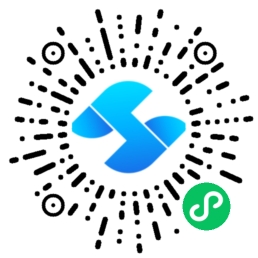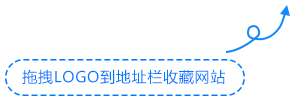免费资源下载

发布日期:2024年1月12日
作者:CSS专家
分类:现代CSS技术
作者:CSS专家
分类:现代CSS技术
一、容器查询:响应式设计的革命
在传统的响应式设计中,我们主要依赖媒体查询(Media Queries)来根据视口尺寸调整布局。然而,这种方法存在明显的局限性:组件无法感知其容器的尺寸变化,导致在复杂布局中难以实现真正的组件自治。CSS容器查询(Container Queries)的出现彻底改变了这一现状。
容器查询允许组件根据其父容器的尺寸而非视口尺寸来调整样式,这使得组件能够在任何布局环境中都能智能地适应,真正实现了”一次编写,到处运行”的组件化理念。
二、容器查询基础与语法
1. 定义容器上下文
.card-container {
/* 定义容器类型 */
container-type: inline-size;
/* 可选:为容器命名 */
container-name: card-area;
/* 或者使用简写 */
container: card-area / inline-size;
}
.sidebar {
container-type: size;
container-name: sidebar-layout;
}
/* 为整个文档定义容器 */
@container style(--responsive: true) {
.component {
/* 当容器具有--responsive: true时应用的样式 */
}
}2. 容器查询的使用
/* 基于容器宽度的查询 */
@container (min-width: 400px) {
.card {
display: grid;
grid-template-columns: 1fr 2fr;
gap: 1rem;
}
.card__image {
border-radius: 12px;
}
}
@container (max-width: 399px) {
.card {
display: flex;
flex-direction: column;
}
}
/* 使用命名容器的查询 */
@container sidebar-layout (min-height: 300px) {
.navigation {
position: sticky;
top: 1rem;
}
}
/* 组合查询条件 */
@container (min-width: 500px) and (max-width: 800px) {
.widget {
font-size: 0.9em;
}
}三、层叠上下文深度解析
1. 层叠上下文的创建条件
/* 1. 根元素(html)自动创建层叠上下文 */
html {
/* 根层叠上下文 */
}
/* 2. position值为absolute/relative且z-index不为auto */
.modal {
position: fixed;
z-index: 1000; /* 创建新的层叠上下文 */
}
/* 3. position值为fixed/sticky */
.header {
position: sticky;
top: 0;
/* 创建新的层叠上下文 */
}
/* 4. flex/grid容器的子项,且z-index不为auto */
.grid-item {
display: grid;
z-index: 1; /* 创建新的层叠上下文 */
}
/* 5. opacity值小于1 */
.transparent-element {
opacity: 0.9; /* 创建新的层叠上下文 */
}
/* 6. transform、filter、perspective、clip-path等属性 */
.animated-card {
transform: translateZ(0); /* 创建新的层叠上下文 */
filter: drop-shadow(0 2px 4px rgba(0,0,0,0.1));
}
/* 7. isolation: isolate属性 */
.isolated-component {
isolation: isolate; /* 显式创建层叠上下文 */
}
/* 8. will-change指定特定属性 */
.optimized-element {
will-change: transform; /* 可能创建层叠上下文 */
}2. 层叠顺序规则
/*
层叠顺序(从底到顶):
1. 层叠上下文的背景和边框
2. z-index为负的子层叠上下文
3. 块级盒子
4. 浮动盒子
5. 内联盒子
6. z-index为auto或0的子层叠上下文
7. z-index为正的子层叠上下文
*/四、实战案例:智能卡片组件系统
1. 基础卡片组件结构
<div class="card-container">
<article class="card">
<div class="card__media">
<img src="image.jpg" alt="" class="card__image">
<div class="card__badge">New</div>
</div>
<div class="card__content">
<h3 class="card__title">卡片标题</h3>
<p class="card__description">这是一个智能卡片组件,能够根据容器尺寸自动调整布局和样式。</p>
<div class="card__actions">
<button class="card__button">主要操作</button>
<button class="card__button card__button--secondary">次要操作</button>
</div>
</div>
</article>
</div>2. 智能卡片CSS实现
.card-container {
container-type: inline-size;
container-name: card-wrapper;
margin: 1rem;
background: white;
border-radius: 12px;
box-shadow: 0 2px 8px rgba(0,0,0,0.1);
overflow: hidden;
}
/* 基础卡片样式 */
.card {
display: flex;
flex-direction: column;
height: 100%;
position: relative;
}
.card__media {
position: relative;
aspect-ratio: 16 / 9;
overflow: hidden;
}
.card__image {
width: 100%;
height: 100%;
object-fit: cover;
transition: transform 0.3s ease;
}
.card__badge {
position: absolute;
top: 0.5rem;
right: 0.5rem;
background: #ff4757;
color: white;
padding: 0.25rem 0.5rem;
border-radius: 4px;
font-size: 0.75rem;
font-weight: bold;
z-index: 1; /* 创建层叠上下文 */
}
.card__content {
padding: 1rem;
flex: 1;
display: flex;
flex-direction: column;
}
.card__title {
font-size: 1.25rem;
font-weight: bold;
margin-bottom: 0.5rem;
color: #2d3436;
}
.card__description {
color: #636e72;
line-height: 1.5;
flex: 1;
}
.card__actions {
display: flex;
gap: 0.5rem;
margin-top: 1rem;
}
.card__button {
padding: 0.5rem 1rem;
border: 2px solid #0984e3;
background: #0984e3;
color: white;
border-radius: 6px;
cursor: pointer;
font-weight: 500;
transition: all 0.2s ease;
flex: 1;
}
.card__button--secondary {
background: transparent;
color: #0984e3;
}
/* 小容器尺寸:紧凑布局 */
@container card-wrapper (max-width: 300px) {
.card {
padding: 0.5rem;
}
.card__media {
aspect-ratio: 1 / 1;
border-radius: 8px;
}
.card__title {
font-size: 1rem;
}
.card__description {
display: none; /* 在小尺寸下隐藏描述 */
}
.card__actions {
flex-direction: column;
}
}
/* 中等容器尺寸:水平布局 */
@container card-wrapper (min-width: 301px) and (max-width: 500px) {
.card {
flex-direction: row;
gap: 1rem;
}
.card__media {
flex: 0 0 120px;
aspect-ratio: 1 / 1;
align-self: flex-start;
border-radius: 8px;
}
.card__content {
padding: 0.5rem 0.5rem 0.5rem 0;
}
.card__title {
font-size: 1.1rem;
}
.card__description {
font-size: 0.9rem;
display: -webkit-box;
-webkit-line-clamp: 2;
-webkit-box-orient: vertical;
overflow: hidden;
}
}
/* 大容器尺寸:特色布局 */
@container card-wrapper (min-width: 501px) {
.card:hover .card__image {
transform: scale(1.05);
}
.card__media::before {
content: '';
position: absolute;
top: 0;
left: 0;
right: 0;
bottom: 0;
background: linear-gradient(
to bottom,
transparent 0%,
transparent 60%,
rgba(0,0,0,0.3) 100%
);
z-index: 1;
}
.card__title {
font-size: 1.5rem;
}
.card__actions {
justify-content: flex-start;
}
.card__button {
flex: 0 1 auto;
min-width: 120px;
}
}
/* 超大容器尺寸:特色展示 */
@container card-wrapper (min-width: 700px) {
.card {
position: relative;
}
.card__content {
position: absolute;
bottom: 0;
left: 0;
right: 0;
background: linear-gradient(
to top,
rgba(0,0,0,0.8) 0%,
transparent 100%
);
color: white;
padding: 2rem;
}
.card__title,
.card__description {
color: white;
}
.card__button {
border-color: white;
background: rgba(255,255,255,0.2);
backdrop-filter: blur(10px);
}
.card__button--secondary {
background: transparent;
color: white;
}
}五、高级应用:复杂布局系统
1. 响应式网格系统
.dashboard {
display: grid;
grid-template-columns: 1fr;
gap: 1rem;
padding: 1rem;
container-type: inline-size;
}
/* 基于容器宽度的网格调整 */
@container (min-width: 600px) {
.dashboard {
grid-template-columns: repeat(2, 1fr);
}
}
@container (min-width: 900px) {
.dashboard {
grid-template-columns: repeat(3, 1fr);
}
.dashboard .card:nth-child(1) {
grid-column: 1 / -1;
}
}
@container (min-width: 1200px) {
.dashboard {
grid-template-columns: repeat(4, 1fr);
grid-template-rows: masonry;
}
}
/* 侧边栏容器的特殊处理 */
.sidebar {
container-type: inline-size;
container-name: sidebar-container;
}
@container sidebar-container (min-width: 200px) {
.sidebar-widget {
padding: 1.5rem;
}
.sidebar-widget .card {
margin-bottom: 1rem;
}
}
@container sidebar-container (max-width: 199px) {
.sidebar-widget {
padding: 0.5rem;
}
.sidebar-widget .card__description {
display: none;
}
}2. 层叠上下文管理系统
/* 组件层叠系统 */
.component-layer {
/* 基础层 */
z-index: 1;
}
.modal-layer {
/* 模态框层 */
z-index: 1000;
position: fixed;
top: 0;
left: 0;
right: 0;
bottom: 0;
background: rgba(0,0,0,0.5);
display: flex;
align-items: center;
justify-content: center;
}
.tooltip-layer {
/* 提示工具层 */
z-index: 2000;
position: absolute;
}
.dropdown-layer {
/* 下拉菜单层 */
z-index: 1500;
position: absolute;
}
/* 使用isolation管理层叠上下文 */
.modal-content {
isolation: isolate; /* 创建独立的层叠上下文 */
background: white;
padding: 2rem;
border-radius: 12px;
max-width: 90vw;
max-height: 90vh;
overflow: auto;
}
.modal-header {
position: sticky;
top: 0;
background: white;
padding-bottom: 1rem;
margin-bottom: 1rem;
border-bottom: 1px solid #ddd;
z-index: 1; /* 在modal-content的层叠上下文中 */
}
/* 嵌套层叠上下文管理 */
.nested-component {
position: relative;
z-index: 1; /* 创建层叠上下文 */
}
.nested-component .tooltip {
position: absolute;
z-index: 100; /* 在父层级叠上下文中 */
bottom: 100%;
left: 50%;
transform: translateX(-50%);
}
/* 使用CSS变量管理z-index */
:root {
--z-index-dropdown: 1000;
--z-index-sticky: 1020;
--z-index-fixed: 1030;
--z-index-modal-backdrop: 1040;
--z-index-modal: 1050;
--z-index-popover: 1060;
--z-index-tooltip: 1070;
--z-index-toast: 1080;
}
.dropdown {
z-index: var(--z-index-dropdown);
}
.modal {
z-index: var(--z-index-modal);
}
.tooltip {
z-index: var(--z-index-tooltip);
}六、性能优化与最佳实践
1. 容器查询性能优化
/* 1. 避免过度使用容器查询 */
/* 不好的做法:为每个小变化都创建查询 */
@container (min-width: 200px) { /* ... */ }
@container (min-width: 201px) { /* ... */ }
@container (min-width: 202px) { /* ... */ }
/* 好的做法:使用断点 */
@container (min-width: 200px) { /* ... */ }
@container (min-width: 400px) { /* ... */ }
@container (min-width: 600px) { /* ... */ }
/* 2. 使用适当的容器类型 */
.optimized-container {
/* 只关心内联尺寸时使用inline-size */
container-type: inline-size;
}
.size-aware-container {
/* 需要同时关心宽度和高度时使用size */
container-type: size;
}
/* 3. 避免嵌套容器查询 */
/* 不好的做法 */
.outer-container { container-type: inline-size; }
.inner-container { container-type: inline-size; }
@container (min-width: 500px) {
.inner-container {
/* 这会创建复杂的查询依赖 */
}
}
/* 4. 使用容器样式查询优化 */
@container style(--theme: dark) {
.component {
background: #333;
color: white;
}
}
.component-container {
--theme: light;
}
.component-container.dark-mode {
--theme: dark;
}2. 层叠上下文性能考虑
/* 1. 谨慎使用will-change */
.performance-optimized {
/* 只在确实需要时使用 */
will-change: transform;
/* 使用后及时清除 */
transform: translateZ(0);
}
/* 2. 避免不必要的层叠上下文 */
.avoid-unnecessary-context {
/* 除非确实需要,否则不要随意设置z-index */
/* z-index: 1; */ /* 谨慎使用 */
}
/* 3. 使用transform代替top/left进行动画 */
.optimized-animation {
/* 使用transform创建层叠上下文并优化动画 */
transform: translate3d(0, 0, 0);
transition: transform 0.3s ease;
}
.optimized-animation:hover {
transform: translate3d(10px, 0, 0);
}
/* 4. 管理合成层 */
.composite-layer {
/* 以下属性会创建新的合成层 */
transform: translateZ(0);
/* 或者 */
will-change: transform;
}
/* 5. 使用content-visibility优化渲染 */
.large-list {
content-visibility: auto;
contain-intrinsic-size: 0 500px;
}
.large-list .item {
contain: style layout paint;
}七、浏览器兼容性与渐进增强
1. 特性检测与回退方案
/* 使用@supports检测容器查询支持 */
@supports (container-type: inline-size) {
.modern-card {
container-type: inline-size;
}
}
/* 不支持容器查询时的回退方案 */
@supports not (container-type: inline-size) {
.card-container {
/* 使用传统的媒体查询或固定布局 */
max-width: 400px;
margin: 0 auto;
}
}
/* 使用CSS变量作为回退机制 */
.card {
/* 默认移动端样式 */
--card-layout: vertical;
--card-padding: 1rem;
--image-aspect-ratio: 16 / 9;
}
/* 在支持容器查询时覆盖变量 */
@container (min-width: 500px) {
.card {
--card-layout: horizontal;
--card-padding: 1.5rem;
--image-aspect-ratio: 1 / 1;
}
}
/* 应用变量 */
.card {
display: flex;
flex-direction: var(--card-layout);
padding: var(--card-padding);
}
.card__media {
aspect-ratio: var(--image-aspect-ratio);
}八、总结与展望
容器查询和层叠上下文是现代CSS中两个强大的特性,它们共同为构建真正响应式、可维护的组件系统提供了坚实的基础。
核心价值总结:
- 容器查询使组件能够根据容器尺寸而非视口尺寸进行响应,实现了真正的组件自治
- 层叠上下文提供了精确的z轴控制,解决了复杂的层叠问题
- 结合使用这两个特性可以构建出高度灵活、可重用的UI组件
- 性能优化确保了这些先进特性在生产环境中的可用性
- 渐进增强策略保证了在不支持新特性的浏览器中的基本功能
未来发展方向:
- 容器查询将支持更多查询类型(样式查询、状态查询等)
- 层叠上下文管理工具和最佳实践将更加成熟
- 与CSS嵌套、作用域样式等新特性的结合使用
- 在设计系统中更广泛地应用容器查询
实践建议:
- 在项目初期就规划好容器查询的断点系统
- 建立统一的层叠上下文管理规范
- 使用CSS自定义属性提高样式系统的灵活性
- 定期进行性能分析和优化
- 关注浏览器兼容性并制定合适的回退方案





